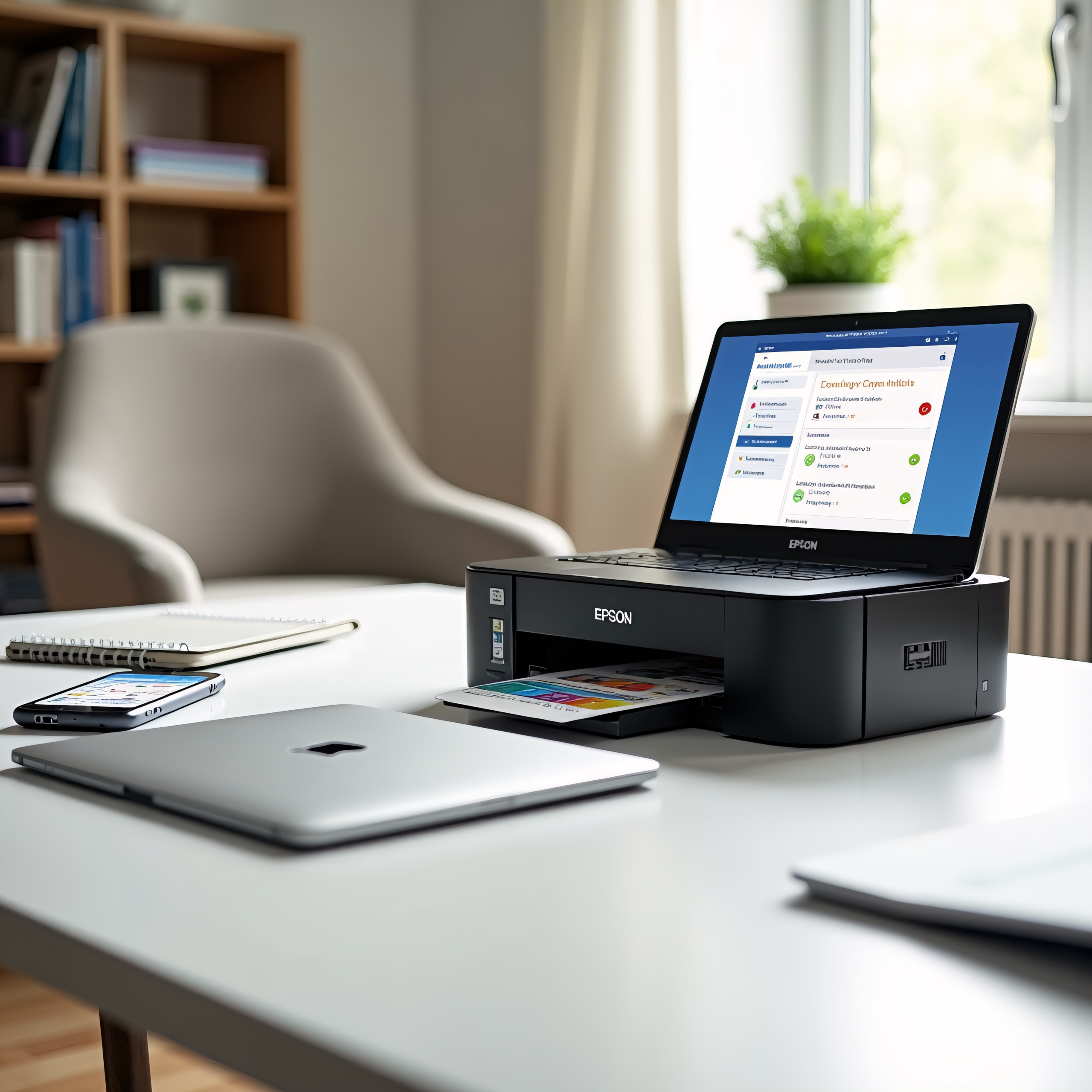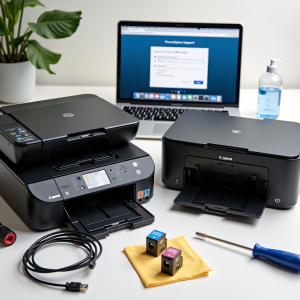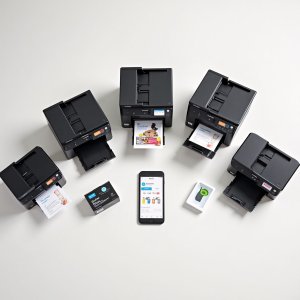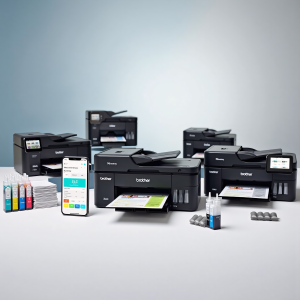estimated reading time: 9 minutes
Understanding Your Connection Options
Let’s begin by exploring the fundamental connection methods available for your Epson printer. The most traditional, and often the most straightforward, is USB connectivity. This method provides a direct link between your computer and the printer, bypassing any network complexities. It’s ideal for situations where network access isn’t available or for prioritizing security, as data transfer is isolated. However, it requires a physical cable and limits access to only the connected computer.
Next, we have Wi-Fi connectivity, the cornerstone of modern wireless printing. This allows multiple devices on your network to access the printer without physical cables. Setting up Wi-Fi typically involves connecting the printer to your home or office network using your network password. Epson printers often support both 2.4GHz and 5GHz Wi-Fi bands, with 5GHz generally offering faster speeds but shorter range. Security is paramount here; ensure your Wi-Fi network is protected with a strong password and WPA2 or WPA3 encryption.
A step up from standard Wi-Fi is Wi-Fi Direct. This creates a direct peer-to-peer connection between your device and the printer, without requiring a router. It’s perfect for temporary connections or when a Wi-Fi network isn’t available. Think of it as a mini-network established solely between your printer and your laptop or smartphone. While convenient, Wi-Fi Direct typically offers slower speeds than a dedicated Wi-Fi network.
Finally, cloud printing offers the ultimate in flexibility. This allows you to print from anywhere with an internet connection, using services like Epson Connect. Epson Connect is a suite of services designed to enhance your printing experience. Let’s break down its key components:
- iPrint: This mobile app allows you to print directly from your smartphone or tablet to your Epson printer, whether it’s on the same Wi-Fi network or remotely via the internet. It supports various file formats and offers features like document scanning.
- Scan to Cloud: As the name suggests, this feature lets you scan documents directly to cloud storage services like Google Drive, Dropbox, and OneDrive.
- Email Print: This ingenious feature assigns a unique email address to your printer. Simply email a document to that address, and the printer will automatically print it.
- Epson Smart Panel: A newer, more streamlined app that combines many of the functionalities of iPrint and other Epson utilities into a single, user-friendly interface. It offers enhanced control and monitoring capabilities.
- Epson ReadyPrint: A subscription service that automatically orders and delivers ink when you’re running low, ensuring you never run out of supplies.
Epson’s Native Connectivity Solutions
Epson Connect isn’t just a single feature, it’s an ecosystem. Utilizing these features in conjunction allows for a layered approach to simplifying how you deal with your printing needs. The iPrint app, for example, isn’t just a rudimentary printing portal. It allows for things like printer status checks and even remote start/stop functionality. Similarly, Scan to Cloud saves you from laborious manual uploads to external storage providers. The evolution of this integration is exemplified in the Smart Panel app, which aims to consolidate these features, adding an extra layer of user-friendliness for novices. Prioritizing Epson’s own services generally ensures the best compatibility and performance with your printer.
Third-Party Connectivity Options
Beyond Epson’s native solutions, several third-party options exist. PrinterShare is a popular mobile printing app that supports a wide range of printers, including Epson models. Printer’s Club offers similar functionality, often with additional features like print job management. Universal printing standards like AirPrint (for Apple devices) and Mopria (for Android devices) provide seamless printing without requiring specific printer drivers. These options can be incredibly useful when dealing with multi-platform environments or needing to print from devices that may not have native support.
Advanced Networking and Control
For advanced users seeking greater control, Epsonnet Config is a powerful tool for managing multiple Epson printers on a network. It allows you to configure printer settings, monitor status, and troubleshoot issues remotely. Assigning a static IP address to your printer can also improve network stability and prevent connectivity problems caused by dynamic IP address assignments. A static IP means the printer always has the same address on your network, making it easier to find and connect to consistently. This method is especially useful in busy network environments.
Troubleshooting Epson Printer Connectivity
Connectivity issues can be frustrating, but often are easily addressed. Here’s a systematic approach to resolving common problems:
- Check Physical Connections (USB): Ensure the cable is securely connected to both the printer and the computer. Try a different USB port.
- Wi-Fi Signal Strength: Make sure the printer is within range of your Wi-Fi router, and the signal isn’t weak.
- Restart Everything: Reboot both your printer and your Wi-Fi router. This often resolves temporary glitches.
- Re-enter Wi-Fi Credentials: Use the printer’s control panel or Epson iPrint app to re-enter your Wi-Fi password. Double-check for typos.
- Update Drivers: Download and install the latest printer drivers from the Epson website.
- Firewall Settings: Ensure your firewall isn’t blocking communication with the printer.
- IP Address Conflicts: If you’ve assigned a static IP address, make sure it doesn’t conflict with any other device on your network.
- Run the Epson Printer Setup: Utilize the built-in printer setup wizard featured within the printer’s menu options.
Epson EcoTank: Frequently Asked Questions
Q: What exactly is an Epson EcoTank printer, and how is it different from traditional inkjet printers?
A: Epson EcoTank printers revolutionize home printing by utilizing refillable ink tanks instead of conventional ink cartridges. This drastically reduces ink costs – often 90% or more! You purchase Epson ink bottles and refill the tanks yourself, making it a significantly more economical choice, particularly for frequent printing. EcoTank models often offer features like wireless connectivity and all-in-one functionality (print, scan, copy).
Q: How do I figure out which Epson EcoTank model is best for my needs (home, small office, photo printing)?
A: Selecting the right EcoTank printer depends on your print volume and needs. For light home use, an EcoTank like the ET-2800 series is ideal. Small offices benefit from faster printing and higher paper capacity found in models like the ET-3830. If you’re a photographer, look for EcoTank printers with dedicated photo ink colours – the ET-8550 boasts exceptional photo quality. Consider print speed (PPM) and monthly duty cycle too.
Q: What are the ongoing costs of owning an Epson EcoTank versus a standard inkjet printer?
A: While the initial investment for an EcoTank printer is higher, long-term costs are dramatically lower. Traditional inkjet cartridges require frequent replacement. With EcoTank, you only buy ink when needed, using high-yield Epson ink bottles. This can save hundreds of dollars over the printer’s lifespan, making EcoTank printers a cost-effective choice for consistent printing.
Q: Is it difficult to refill the ink tanks on my Epson EcoTank printer? What precautions should I take?
A: Refilling Epson EcoTank ink tanks is surprisingly straightforward! Epson designs the bottles with colour-coded, drip-free nozzles that correspond to each tank. Simply insert the bottle and the ink flows automatically. Important: Only use genuine Epson ink to avoid damaging the printhead. Avoid spills and don’t mix ink colours. Detailed refill instructions are included with your printer and available online.
Q: My Epson EcoTank printer isn’t connecting to Wi-Fi. What troubleshooting steps can I take?
A: Wi-Fi connectivity issues with Epson EcoTank printers can usually be resolved easily. First, ensure your printer is within range of your router. Reboot both your printer and router. Use the Epson iPrint app or the printer’s control panel to re-enter your Wi-Fi password. Check for driver updates on the Epson website. Sometimes a simple restart fixes the connection!
Q: Can I print from my smartphone or tablet with an Epson EcoTank printer?
A: Absolutely! Most EcoTank printers offer multiple mobile printing options. Using Epson Smart Panel (or iPrint), you can print directly from your iOS or Android device via Wi-Fi or Wi-Fi Direct. Many models also support Apple AirPrint and Google Cloud Print, providing seamless printing from your favourite mobile apps without needing additional software.
Q: Where can I find genuine Epson ink bottles and replacement parts for my EcoTank printer?
A: You can purchase genuine Epson ink bottles and replacement parts (like printheads) directly from the Epson website (http://www.epson.com), authorized Epson resellers (like Best Buy and Staples), and online retailers such as Amazon. Always use genuine Epson products to maintain your printer’s warranty and ensure optimal performance and print quality.
Staying Connected: Mastering Your Epson Printer Experience
We’ve covered a lot of ground in this guide, from the fundamentals of USB connectivity to the more sophisticated realms of Wi-Fi Direct, cloud printing, and advanced network configurations like Epsonnet Config. We’ve explored Epson’s own robust suite of solutions – Epson Connect, iPrint, Smart Panel, and ReadyPrint – and how they seamlessly integrate with your devices. Additionally, we’ve shed light on versatile third-party options like PrinterShare, Printer’s Club, AirPrint, and Mopria, providing you with a wealth of choices to tailor your printing experience. Finally, we tackled common troubleshooting hurdles, equipping you with the knowledge to resolve connection issues and maximize your printer’s full potential.
Ultimately, understanding these options unlocks a smoother, more efficient, and more convenient printing workflow. Whether you’re a home user printing family photos or a professional relying on consistent, reliable output, the right connectivity solution is key. Looking ahead, we can anticipate even greater integration of printers into the “Internet of Things” ecosystem. The trend towards serverless printing, enhanced mobile device compatibility, and even more intuitive setup processes – driven by advancements in AI – are all on the horizon. Furthermore, security will continue to be a paramount concern, with increased emphasis on secure network protocols and firmware updates to protect your data.
Still wrestling with Epson printer connectivity? Don’t let frustrating setups steal your time! Discover how a seamless connection unlocks the full potential of your Epson printer – especially with the cost-saving benefits of an EcoTank model. Click here to explore The Ultimate Guide to Modern Printing and find the perfect solution for your home or office! My affiliate amazon link
Check out our other blog on Adjustment Programs for EcoTank Printers



